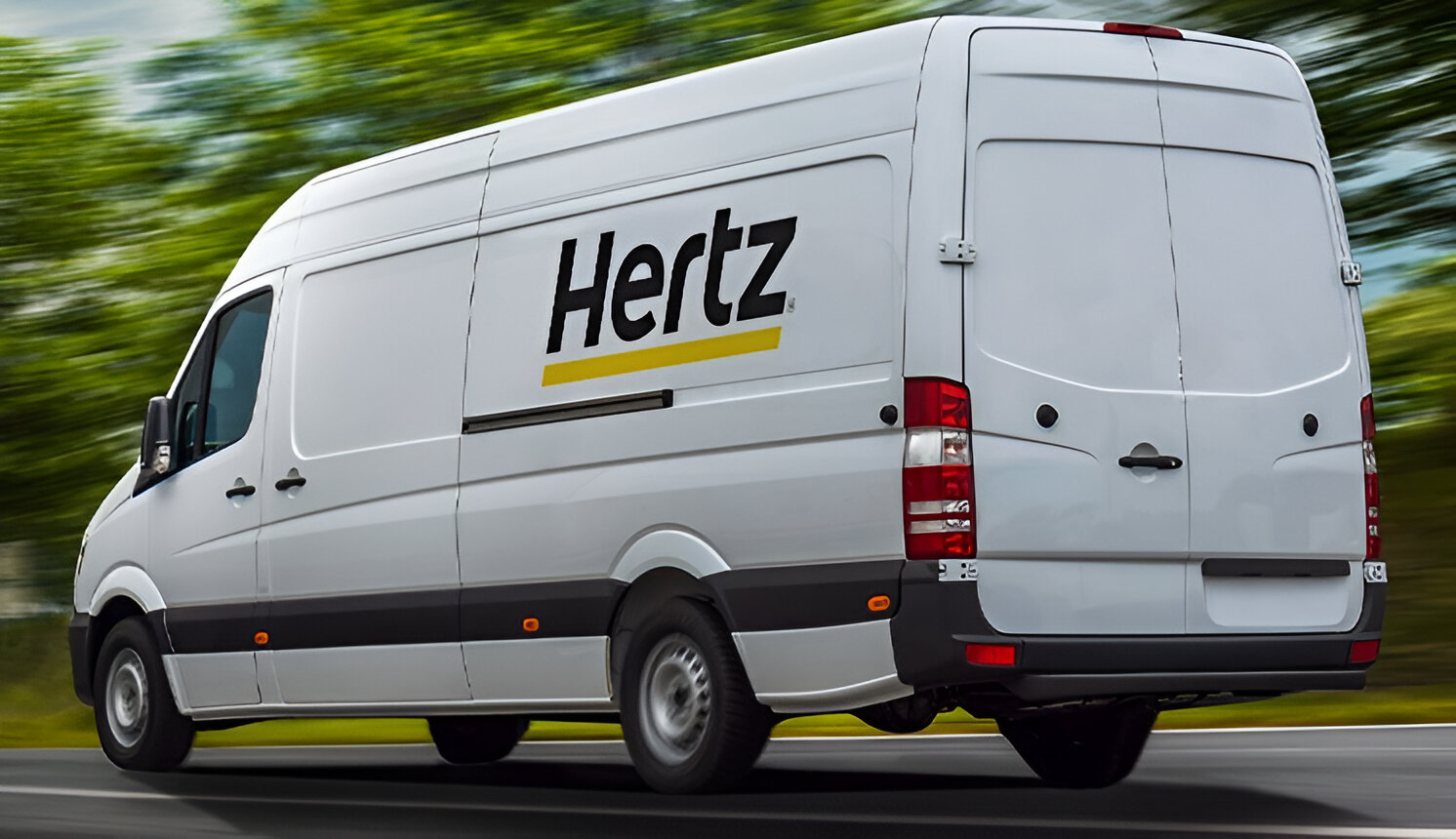Early motorhomes weren’t just vehicles; they represented freedom. These rolling homes began as converted trucks but evolved into luxurious havens. Now, you can explore how these vehicles transformed our relationship with adventure and changed travel forever.
Mobile homes combined transportation and living space into one package, like a Swiss Army knife for travelers. Each decade added new features to the recipe, creating the rich variety of RVs we know today.
11. Curtis Aerocar (1921) – Exterior
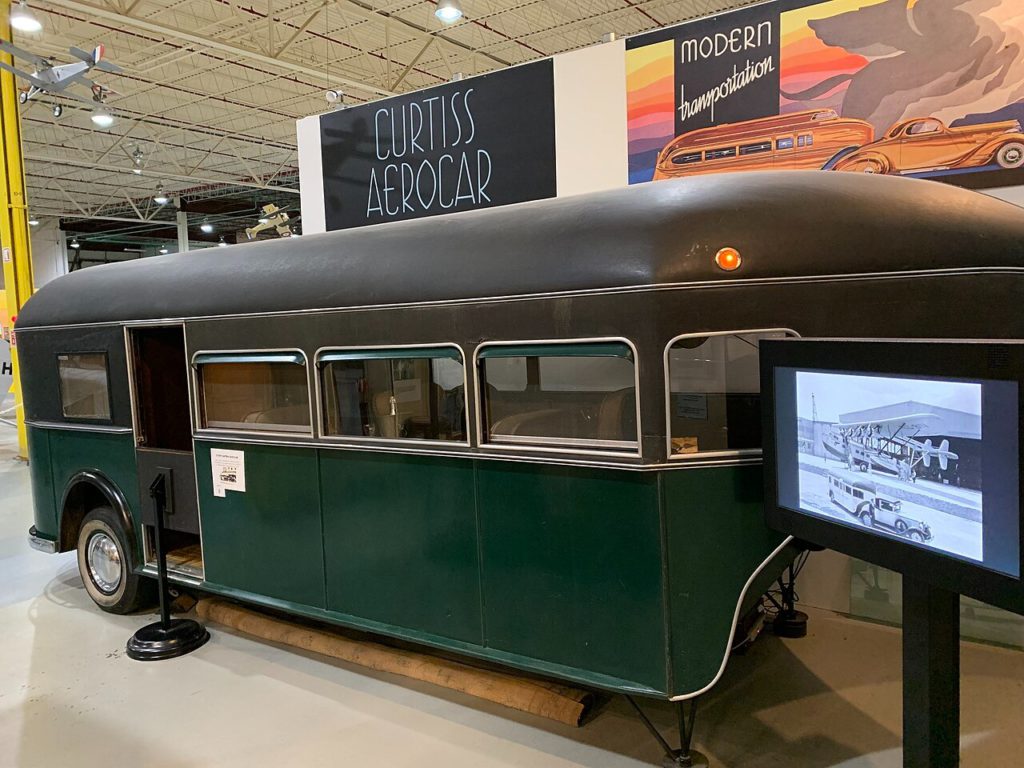
Aviation principles revolutionized road travel when Glenn Curtis unveiled his aerodynamic Aerocar in 1921. The streamlined profile reduced wind resistance during travel. Advanced engineering principles guided the exterior design.
The Aerocar looked like something from a science fiction magazine cover. Its futuristic appearance stood out among boxy vehicles of the era. Engineering and aesthetics combined in perfect harmony. The Aerocar sliced through air resistance so effectively that it achieved fuel efficiency numbers that wouldn’t become standard in motorhomes for another forty years.
Plush seating and sleeping quarters in the Aerocar delivered unprecedented comfort while maintaining the efficiency of Curtis’s aviation-inspired design. A compact kitchen made meal preparation convenient. The inclusion of a small bathroom enhanced on-the-road comfort. Every feature reflected thoughtful design.
10. Covered Wagon Trailer (1929) – Exterior
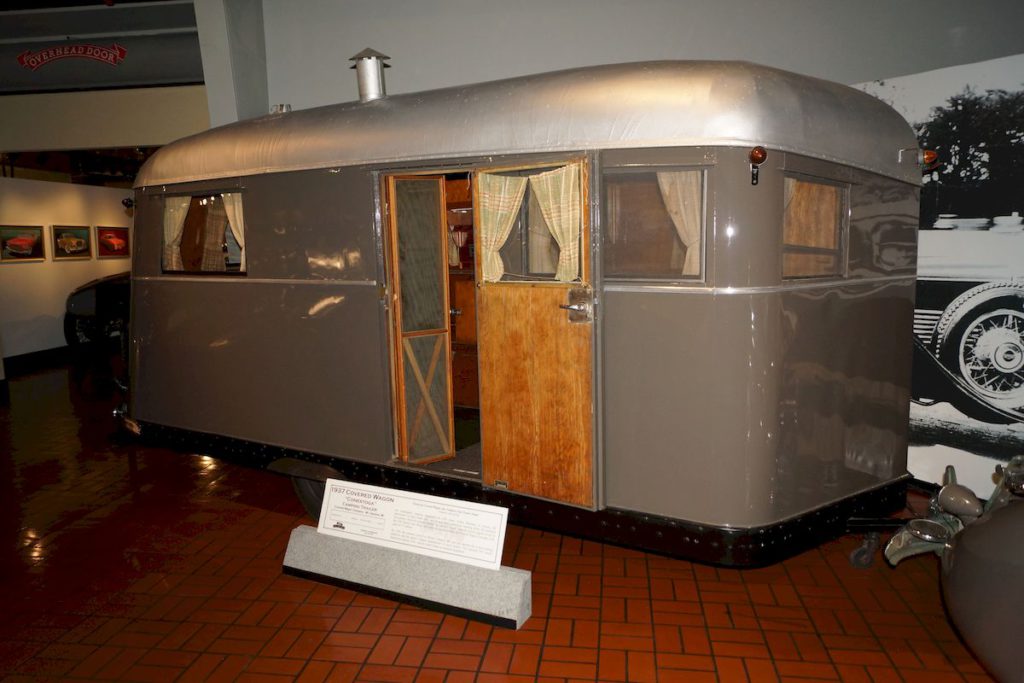
As the Great Depression tightened family budgets in 1929, the Covered Wagon Trailer offered affordable mobility when Americans needed it most. Built with a wooden body and canvas roof, it emphasized practicality. The design remained accessible during the economic crisis. Simple materials kept manufacturing costs low.
This trailer was the tortoise in a world of hares—slow, steady, and ultimately successful. While luxury manufacturers struggled during the economic crash, this practical design found a market niche. Hotel stays that once cost a week’s wages suddenly became unnecessary when your Covered Wagon provided comfortable accommodations for the price of a campsite permit.
9. Airstream Clipper (1936) – Exterior
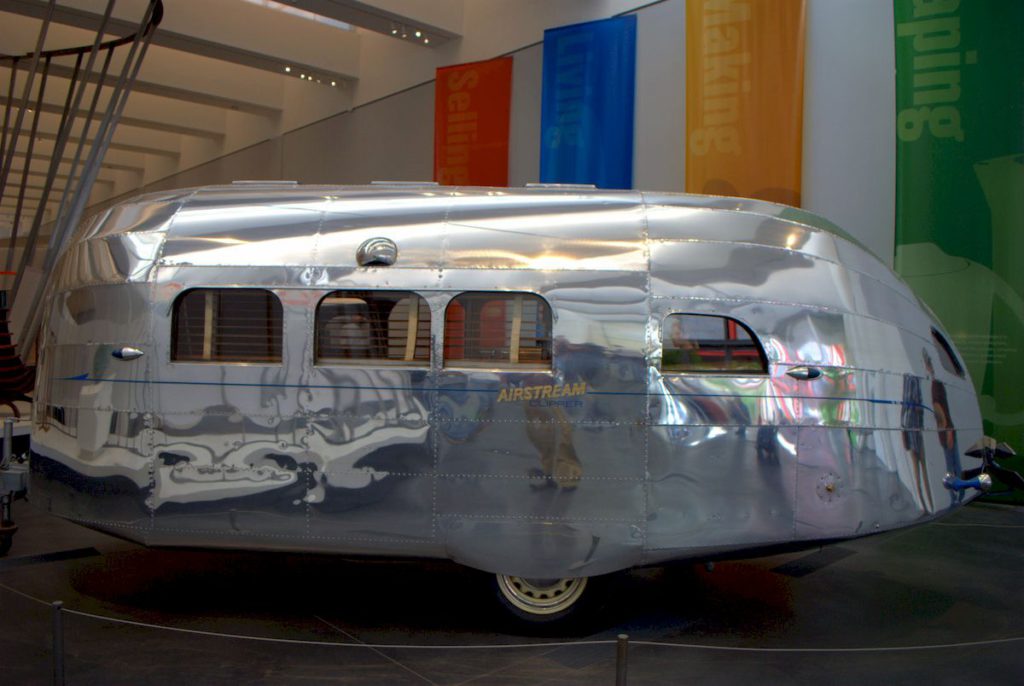
More than 85 years later, the unmistakable aluminum silhouette of Wally Byam’s 1936 Airstream Clipper remains the most recognizable trailer design in history. It featured a distinctive aluminum body that turned heads. Measuring 22 feet long, the trailer maintained mobility while offering ample interior space. The aerodynamic shape improved towing efficiency.
The Airstream worked like a fashion statement on wheels – immediately recognizable and stylish. Its silver exterior became instantly recognizable and influenced trailer design for generations. Even today, vintage Airstreams command prices 400% higher than comparable trailers of the same era – a testament to Wally Byam’s timeless design that refuses to look dated nearly a century later.
Insulated walls created a comfortable haven inside the Airstream Clipper, letting travelers explore diverse climates without sacrificing comfort. The kitchenette featured a stove and ice box for meal preparation. A small bathroom added convenience for longer trips. Storage space accommodated essentials for up to four people.
8. Hunt House Car (1937) – Exterior
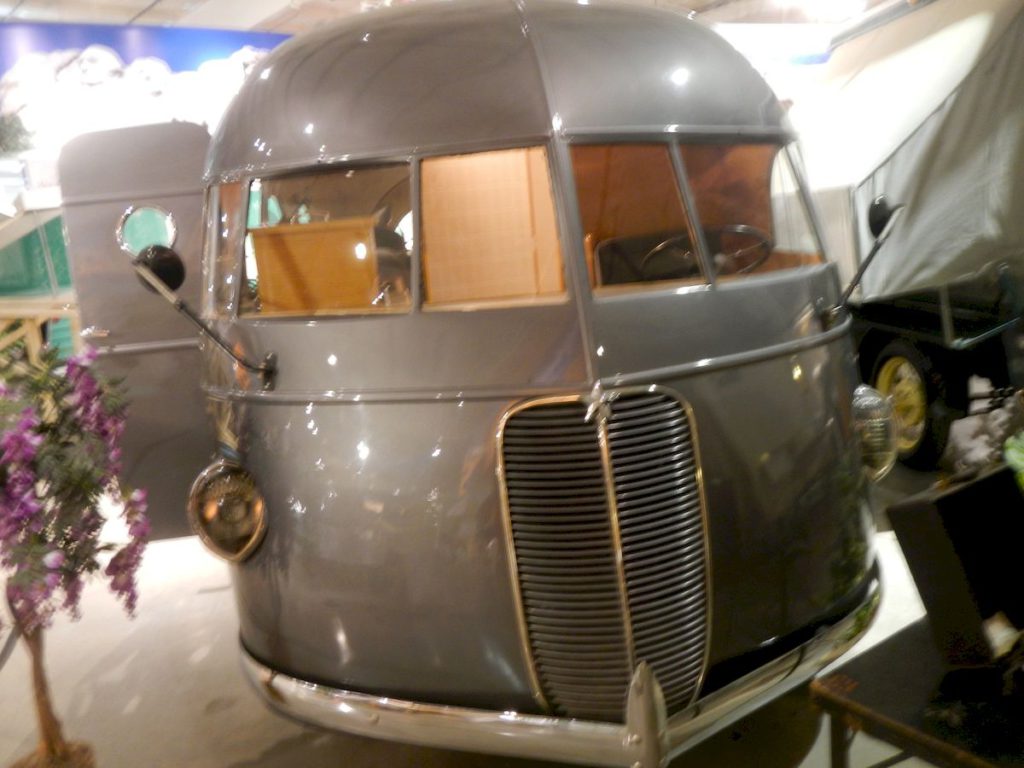
While other motorists stared at bland production vehicles, Hunt House Car owners enjoyed the enviable combination of custom design and aerodynamic efficiency. The sleek exterior reflected automotive styling trends of the era. Advanced materials reduced weight while maintaining strength.
The exterior design balanced aesthetics with function. Hunt’s creation merged automotive and residential design principles. The result looked unlike anything else on the road. Its distinctive profile announced a new approach to motorhome design.
Interior spaces flowed together like a well-choreographed dance despite size limitations. The design prioritized livability during travel. Quality materials enhanced the user experience. The Hunt House Car successfully merged luxury with functionality.
7. Western Flyer Motorhome (1941) – Exterior
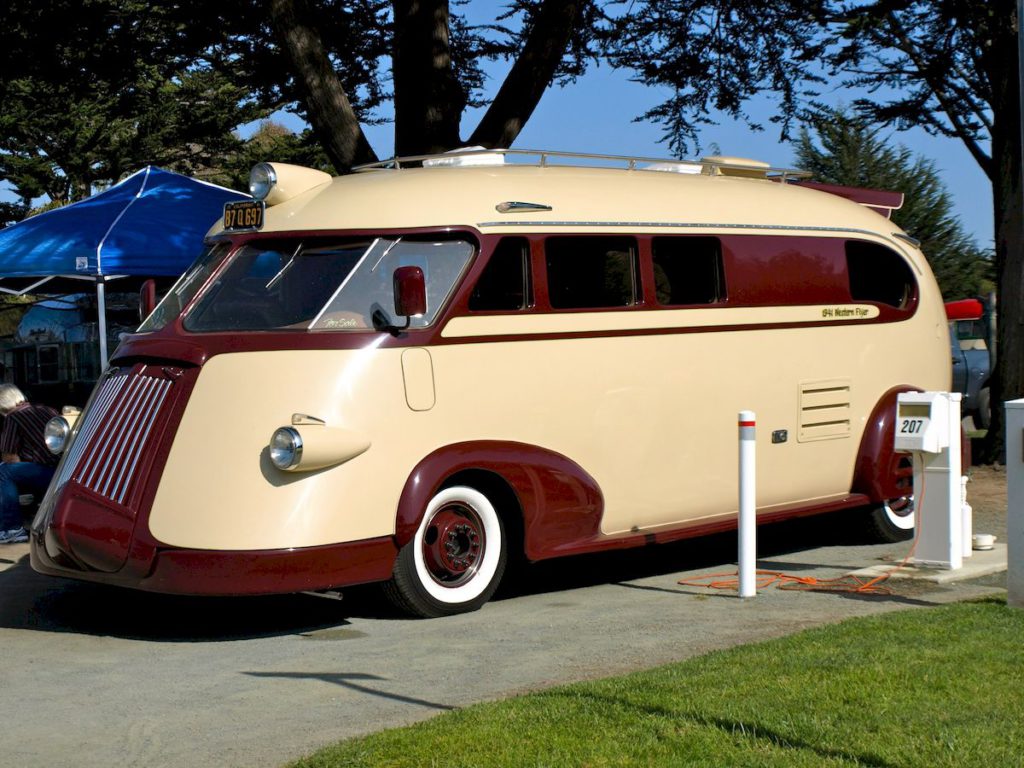
Suburban-sized living spaces rolled onto American highways in 1941 when Western Flyer mounted luxurious accommodations on robust bus platforms. The substantial platform supported a spacious living environment. Durable materials ensured longevity and reliability. The exterior projected permanence and stability.
Western Flyer approached motorhome design like a Thanksgiving dinner – go big or go home. This vehicle was the heavyweight champion in a field of middleweights, offering substantially more space than competitors. The result was a vehicle that truly felt like a permanent home on wheels.
The design brought home-like amenities to mobile living. Travelers enjoyed unprecedented space and convenience. Interior appointments rivaled those of permanent homes. The Western Flyer delivered residential comfort in a mobile package.
6. Spartan Manor (1946) – Exterior
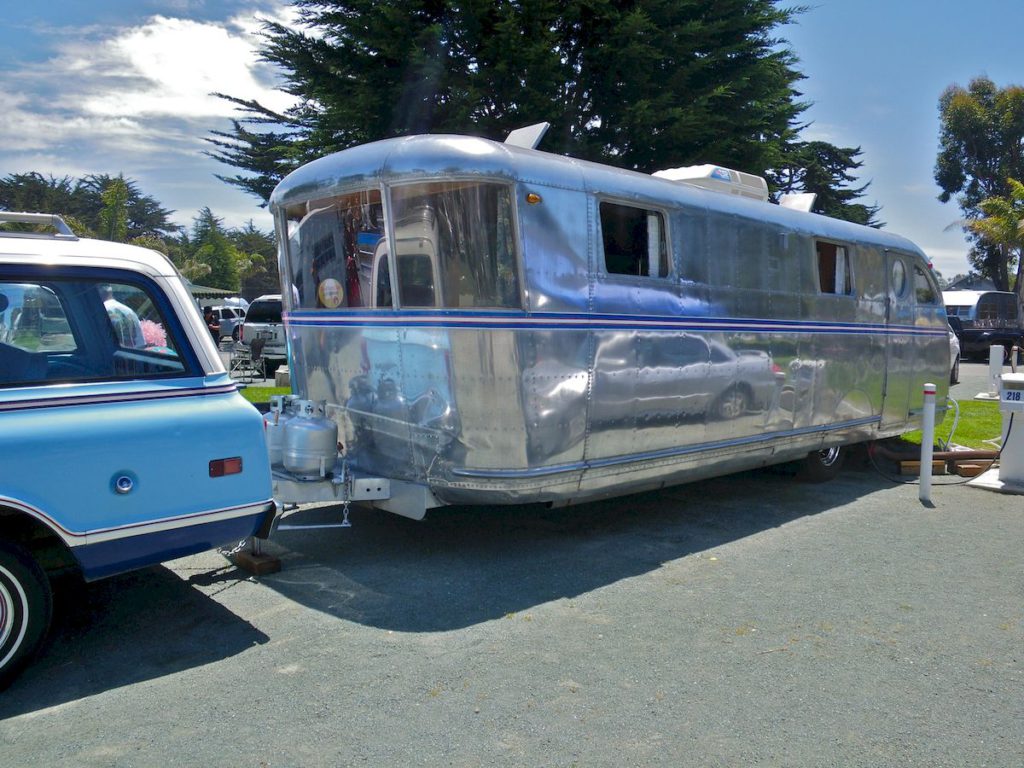
In 1946, America’s hunger for travel collided with innovative aircraft design when Spartan Aircraft Company unveiled their stunning Manor trailer. It featured a lightweight aluminum body derived from aircraft design. Models measured between 24 to 30 feet, offering substantial living space. The company created these incredible mobile homes you’ve never seen with aerodynamic elements that improved towing efficiency.
Spartan applied aviation principles to trailer design like putting racing stripes on a family sedan – it just made the whole thing better. The company utilized manufacturing techniques from aircraft production. These methods created a superior travel trailer that remained popular with enthusiasts decades after production ceased.
The interior delivered comfort previously associated with permanent homes. Quality materials created a premium user experience. Thoughtful design made effective use of available space. The Spartan Manor became a symbol of post-war prosperity.
5. Flexible Clipper (1947) – Exterior
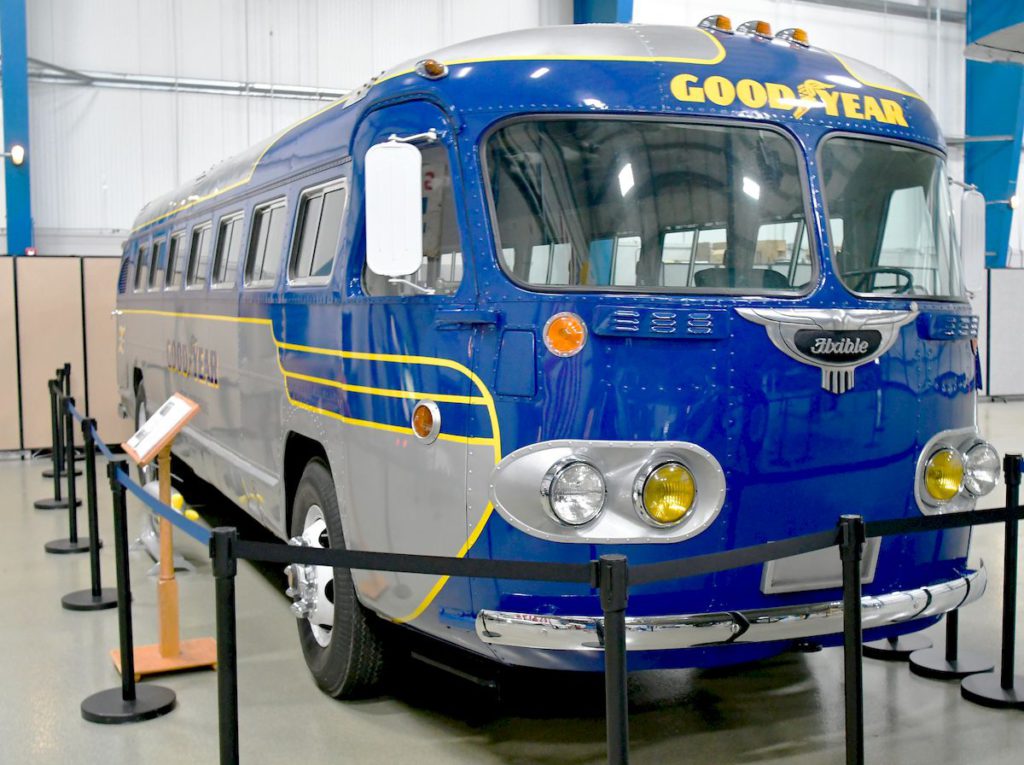
Travelers seeking long-distance comfort found their perfect match when Flexible introduced its innovative Clipper motorhome in 1947. Flexible built it on a reliable bus chassis for durability. Power came from either a Buick straight-8 engine or a GM diesel. The substantial platform supported extensive living areas. Its bus heritage ensured mechanical reliability.
The Clipper combined passenger bus engineering with home comforts like a mullet haircut – business in the front, party in the back. The sturdy design offered travelers the best of both worlds – reliable transportation and comfortable living space. A single Clipper could transport a family coast-to-coast through any terrain, handling everything from mountain passes to desert heat without straining its robust systems.
Interior appointments focused on long-distance comfort. Travelers could live aboard for extended periods. The design eliminated the need for external accommodations. When hotel availability was uncertain and restaurant quality unpredictable, Clipper owners enjoyed the consistent comforts of their familiar accommodations regardless of location.
4. Vagabond Coach (1948) – Exterior
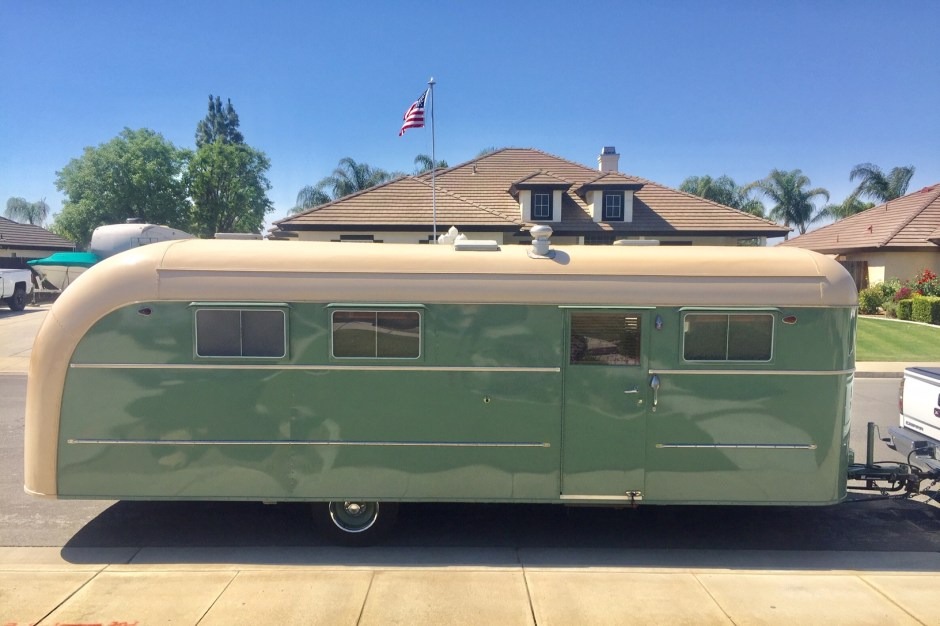
Steel and aluminum combined in perfect harmony when the Vagabond Trailer Company unveiled their premium coach in 1948. They built it with a sturdy steel frame for durability. Its aluminum exterior resisted weather damage. The robust construction supported extensive interior amenities.
The Vagabond struck the perfect balance between rugged and refined, like a cowboy in a tailored suit. Its solid construction inspired confidence for long-distance travel and extended stays. When other trailers showed their age after a few seasons, the Vagabond’s aircraft-grade materials ensured it remained in pristine condition for decades.
Vagabond Coach (1948) – Interior
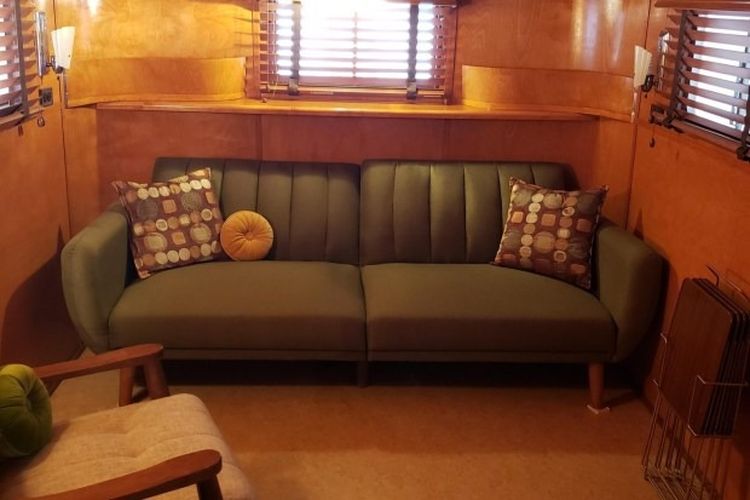
If you dreamed of bringing residential comforts to remote destinations, the Vagabond’s spacious interior made that possible with a full kitchen featuring modern appliances. Built-in cabinets provided ample storage for extended trips. A private bathroom came equipped with a toilet and shower. Quality materials enhanced the user experience.
Interior design emphasized comfort and convenience. Travelers enjoyed home-like accommodations on the road. The layout supported extended living without sacrifices. When storms forced other campers to seek shelter, Vagabond owners simply moved inside their substantial mobile homes, as secure and comfortable as they would be in a permanent structure.
3. Airstream Liner (1951) – Exterior
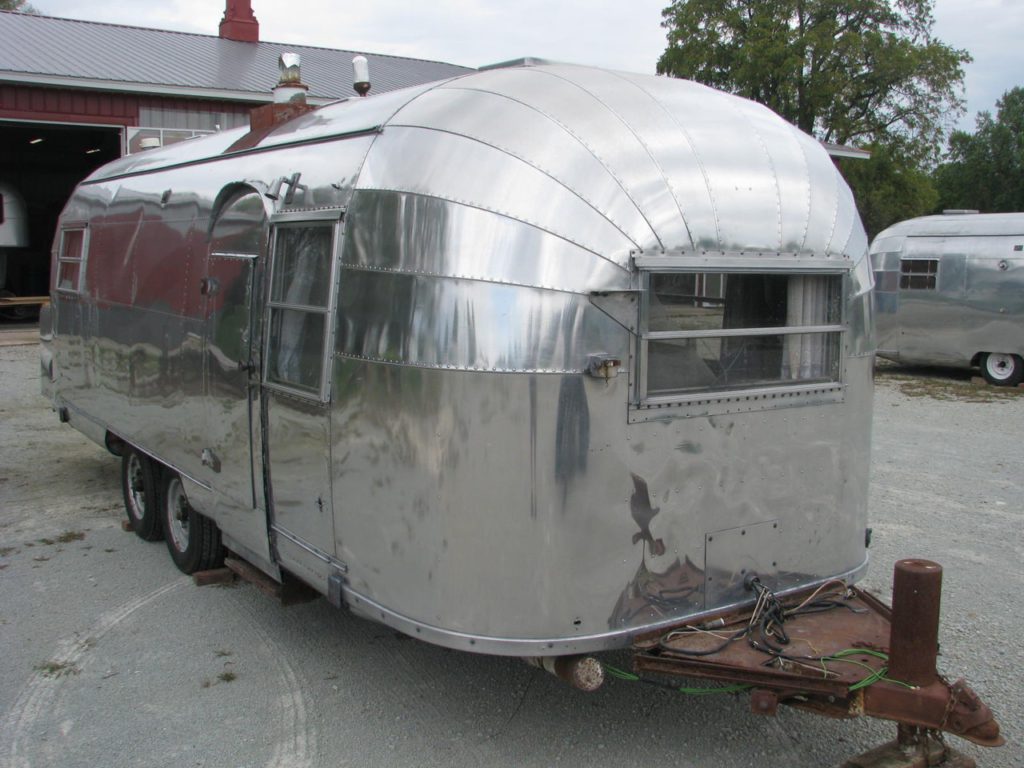
The iconic riveted aluminum silhouette of the 1951 Airstream Liner forever changed the travel trailer industry. Available in lengths from 16 to 30 feet, it accommodated various needs. Aerodynamic design improved towing performance.
The exterior reflected Wally Byam’s commitment to excellence. Premium materials ensured longevity and durability. The Airstream Liner became to travel trailers what the Beatles became to music – an icon that forever changed its industry. Its distinctive silhouette remains recognizable even to non-RV enthusiasts.
Airstream Liner (1951) – Interior
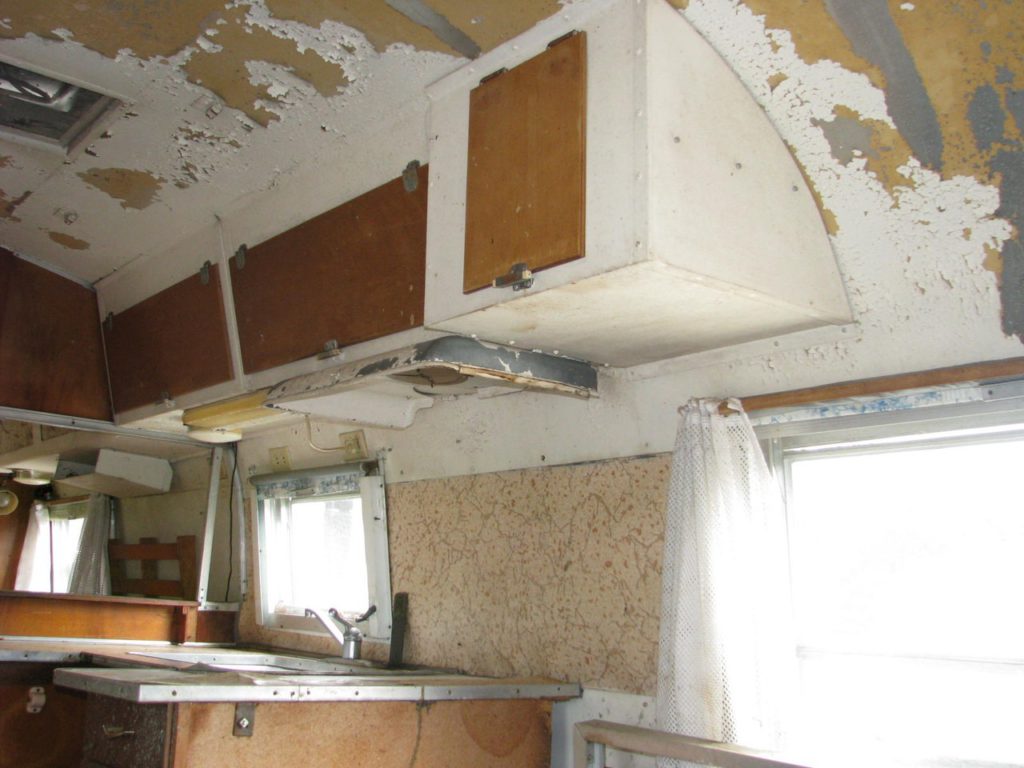
Campground envy became common once the Airstream Liner introduced its premium interior appointments in 1951. A fully equipped kitchen offered cooking capabilities for extended trips. Larger models included a private bathroom with modern fixtures. Comfortable living spaces provided relaxation after traveling. Thoughtful storage solutions maintained organization.
Interior design prioritized both function and comfort. Premium materials enhanced the user experience. Efficient layouts maximized available space. The Airstream Liner set standards that continue to influence design today.
2. Holiday Rambler (1953) – Exterior
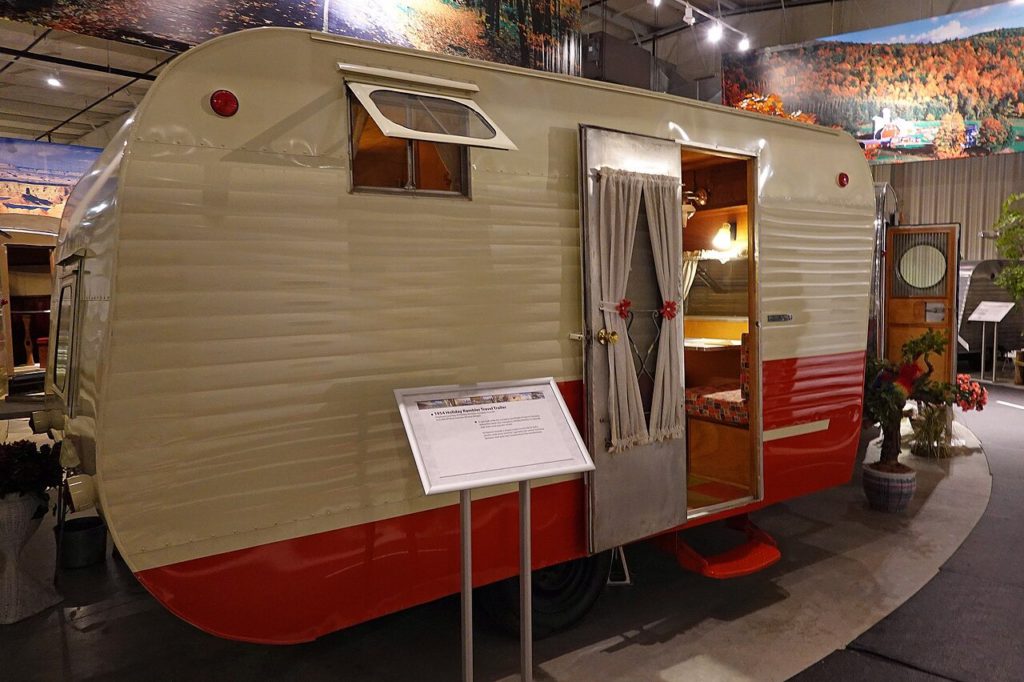
For middle-class Americans seeking quality without pretentiousness, the 1953 Holiday Rambler delivered the perfect balance. They built it with a lightweight aluminum frame that enhanced durability and efficiency. Aerodynamic elements improved towing performance. The exterior balanced function with contemporary styling.
The Holiday Rambler was the Swiss Army knife of travel trailers – versatile, reliable, and accessible without unnecessary frills. Its practical design earned a loyal following among middle-class Americans who wanted quality without pretentiousness. Sometimes, the best design is the one that simply works.
Family vacations transformed once the Holiday Rambler introduced comfortable sleeping areas that accommodated entire families. The kitchen featured cooking appliances and storage for meal preparation. Many models offered a bathroom with a toilet and shower. Comfortable sleeping areas accommodated entire families. Storage solutions kept belongings organized during travel.
Interior spaces focused on family-friendly functionality. Durable materials stood up to regular use. The design supported extended vacations without sacrificing comfort. It became a popular choice for American families. Kids fought over the best bunks then, just as they do now.
1. Winnebago F-17 (1966) – Exterior
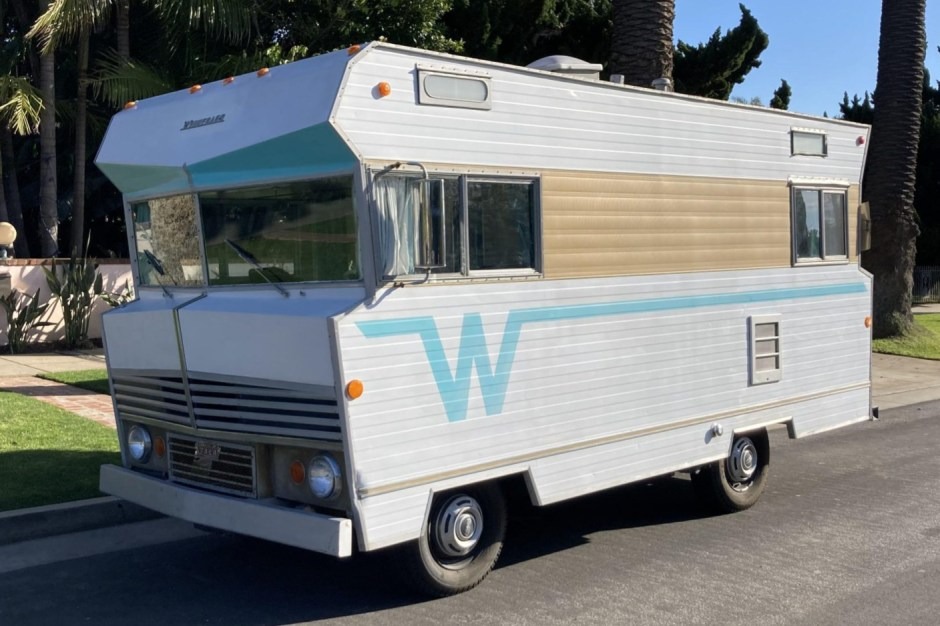
RV travel finally became affordable for average Americans when Winnebago introduced the compact F-17, democratizing motorhome ownership. Winnebago introduced this groundbreaking motorhome in 1966. They built it on a Ford chassis for reliability and service availability. It measured just 17 feet in length, making it compact and maneuverable. The modest size improved accessibility for new RV drivers.
The F-17 was to motorhomes what fast food was to dining – it democratized the experience for everyday Americans. Its affordable price put RV travel within reach of middle-class families for the first time. The distinctive W logo soon became as recognizable on highways as golden arches.
Winnebago F-17 (1966) – Interior
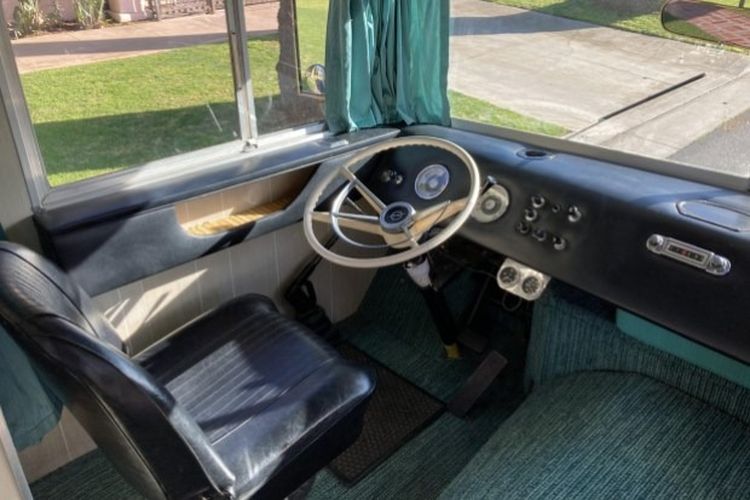
Tall travelers quickly learned to duck when entering the F-17, but its clever interior design made the compact space feel surprisingly comfortable. The full kitchen featured essential appliances for meal preparation. A small bathroom contained a toilet and sink for convenience. Convertible seating maximized the functionality of limited space. Storage solutions maintained organization.
Interior design prioritized functionality and affordability. Quality materials provided durability without excessive cost. The efficient layout made the most of compact dimensions. Its affordable price democratized RV travel for American families. Though tall people quickly learned to duck when entering doorways.








